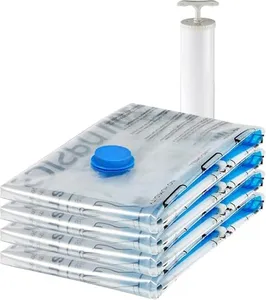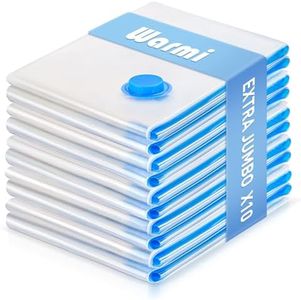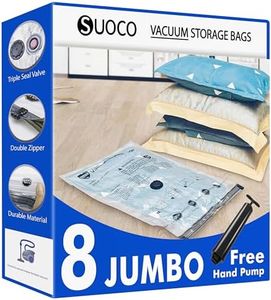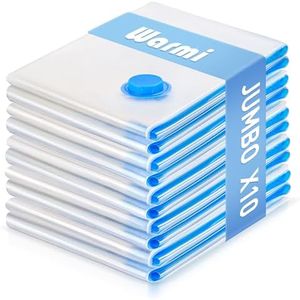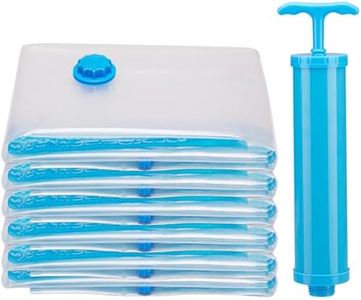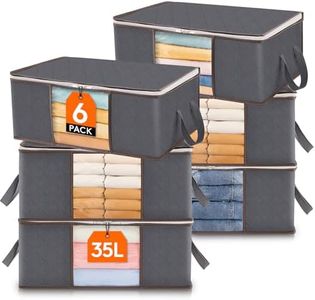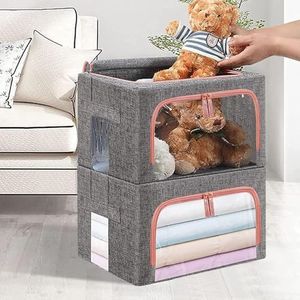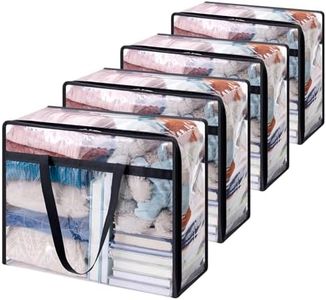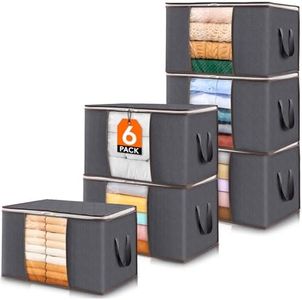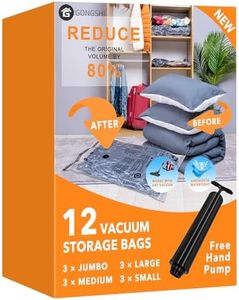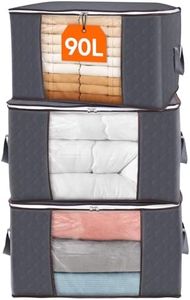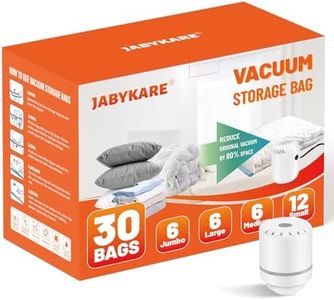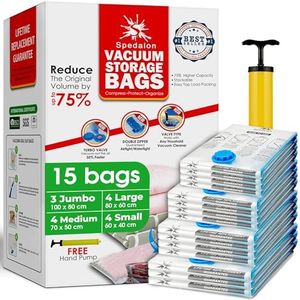We Use CookiesWe use cookies to enhance the security, performance,
functionality and for analytical and promotional activities. By continuing to browse this site you
are agreeing to our privacy policy
10 Best Blanket Storage Bags
From leading brands and best sellers available on the web.Buying Guide for the Best Blanket Storage Bags
When choosing blanket storage bags, it's important to consider not just the size, but also features like material durability, closure styles, ease of use, and extra functions such as handles or viewing windows. The right choice will help keep your blankets clean, organized, and in good condition for when you need them. Start by thinking about how many blankets you need to store and whether your storage space is under the bed, in a closet, or on open shelving. This sense of where and how you'll use the bags will guide your decisions on features and size.MaterialThe material of a blanket storage bag can affect both protection and durability. Materials such as cotton, non-woven fabric, plastic, or oxford cloth are common. Cotton and non-woven fabric are breathable, which is great for preventing mildew, while thicker plastics can offer strong protection from moisture or pests. If you plan to store blankets long-term or in a damp environment, a moisture-resistant material may be important. For those who move their storage items often, thicker and more rugged materials prevent tearing and extend the bag’s life.
Capacity/SizeThe size or capacity of a storage bag determines how many blankets (or how bulky of blankets) you can fit inside. Sizes range from compact (for one small throw) to extra-large (for multiple bulky comforters). Consider the types and number of items you want to store: larger families or those with many blankets should look for larger capacities, while someone with only a throw or two may prefer smaller bags that fit better in limited spaces. Be sure to measure your storage space and check that your chosen bag fits well.
Closure TypeClosure methods for storage bags include zippers, Velcro, snaps, or drawstrings. Zippers provide the most secure seal and are best if you want to keep dust and bugs out. Velcro and snaps are easier to open but may not seal as tightly. Drawstrings are quick but generally less protective. If you access your blankets often, choose a closure that balances convenience with how well it protects your items.
Handles and PortabilitySome storage bags have handles or reinforced sections to make moving them easier. If you plan to move your blankets around—like from attic to closet or from house to car—sturdy handles become very helpful. For bags that will stay in one place, handles may be less vital, but could still make rearranging easier. Consider your physical space and how much you'll move your blanket storage around when deciding if this is important.
Visibility/Viewing WindowMany storage bags now feature a clear panel or window that lets you see what's inside without opening the bag. This is especially helpful if you have multiple bags and want to avoid opening them all to find what you need. If you value easy organization, or plan to store non-blanket items too, look for bags with this feature. For purely seasonal storage where you rarely access the contents, this may be less important.
Breathability and VentilationBreathable storage bags allow air to circulate, reducing the risk of mold, mildew, or musty smells, especially for natural fiber blankets. Look for bags labeled as 'breathable' or featuring small vents if you'll be storing clean, dry blankets in non-damp places. However, if pest or water protection is a bigger concern (like in basements), less breathable but more tightly sealed bags may suit your needs better.
